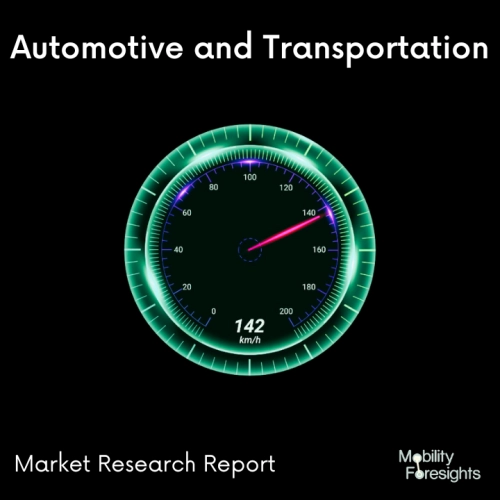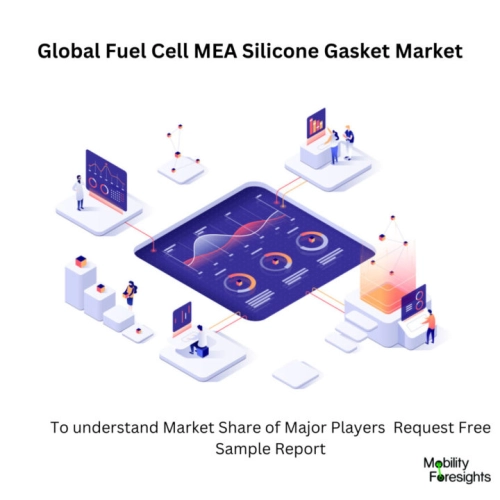
- Get in Touch with Us

Last Updated: Apr 25, 2025 | Study Period: 2023-2030
MEA Silicone Gasket for fuel cells ensures correct compression and serves as a "barrier" against potential fuel leaks; achieving the highest level of efficiency possible. The thickness of the gaskets is one of the crucial construction parameters for a fuel cell. The extent to which the flow fields can pinch into the electrode is determined by the thickness of the gasket.
A fuel cell's core component, the Membrane Electrode Assembly (MEA), aids in the electrochemical reaction that separates electrons. A fuel (hydrogen, methanol, etc.) can be found on the MEA's anode side.
There are two categories for the various kinds of fuel cells: first-generation or low-temperature (alkaline, solid polymer, and phosphoric acid fuel cells); and second-generation, high-temperature fuel cells (solid oxide fuel cells and molten carbonate fuel cells).
The temperature of the fuel cell reaction is controlled by the stack cooling system, which also provides source heat for the HVAC system and acts as a heat sink for an electrical resistor. There is a bypass filtration loop and a main coolant loop in the stack cooling system.

The Global fuel cell MEA Silicone Gasket market accounted for $XX Billion in 2022 and is anticipated to reach $XX Billion by 2030, registering a CAGR of XX% from 2023 to 2030.
It has been asserted that the introduction of a brand-new fuel cell MEA Silicone Gasket with an innovative ultra-low contact resistance coating will enable hydrogen fuel cells to achieve greater efficiency. The plate flatness of the new Interplex product ensures improved structural integrity of the fuel cell stack and prevents leakage issues.
The Interplex fuel cell MEA Silicone Gasket offers improved plate flatness and exhibits only 8% variation in evenness with tight tolerances of flow channel thickness (across their active area) thanks to the precision stamping techniques used.
As a result, these fuel cell MEA Silicone Gaskets ensure leak-free operation and even power distribution across their plates' entire surface. Likewise, high-quality welds are produced by advanced laser welding.
Additionally, crucial factors are the high-speed stamping and coating procedures that Interplex has developed. The physical vapor deposition (PVD) coating of plates takes a fifth less time than other suppliers thanks to these, allowing the company to achieve industry-leading productivity levels.
Additionally, the silicone rubber gaskets are attached to the fuel cell MEA Silicone Gasket using proprietary over-molding technology with greater precision. When stacking the fuel cell MEA Silicone Gasket with a membrane electrode assembly (MEA), it minimizes assembly issues.
| Sl no | Topic |
| 1 | Market Segmentation |
| 2 | Scope of the report |
| 3 | Abbreviations |
| 4 | Research Methodology |
| 5 | Executive Summary |
| 6 | Introduction |
| 7 | Insights from Industry stakeholders |
| 8 | Cost breakdown of Product by sub-components and average profit margin |
| 9 | Disruptive innovation in the Industry |
| 10 | Technology trends in the Industry |
| 11 | Consumer trends in the industry |
| 12 | Recent Production Milestones |
| 13 | Component Manufacturing in US, EU and China |
| 14 | COVID-19 impact on overall market |
| 15 | COVID-19 impact on Production of components |
| 16 | COVID-19 impact on Point of sale |
| 17 | Market Segmentation, Dynamics and Forecast by Geography, 2023-2030 |
| 18 | Market Segmentation, Dynamics and Forecast by Product Type, 2023-2030 |
| 19 | Market Segmentation, Dynamics and Forecast by Application, 2023-2030 |
| 20 | Market Segmentation, Dynamics and Forecast by End use, 2023-2030 |
| 21 | Product installation rate by OEM, 2023 |
| 22 | Incline/Decline in Average B-2-B selling price in past 5 years |
| 23 | Competition from substitute products |
| 24 | Gross margin and average profitability of suppliers |
| 25 | New product development in past 12 months |
| 26 | M&A in past 12 months |
| 27 | Growth strategy of leading players |
| 28 | Market share of vendors, 2023 |
| 29 | Company Profiles |
| 30 | Unmet needs and opportunity for new suppliers |
| 31 | Conclusion |
| 32 | Appendix |